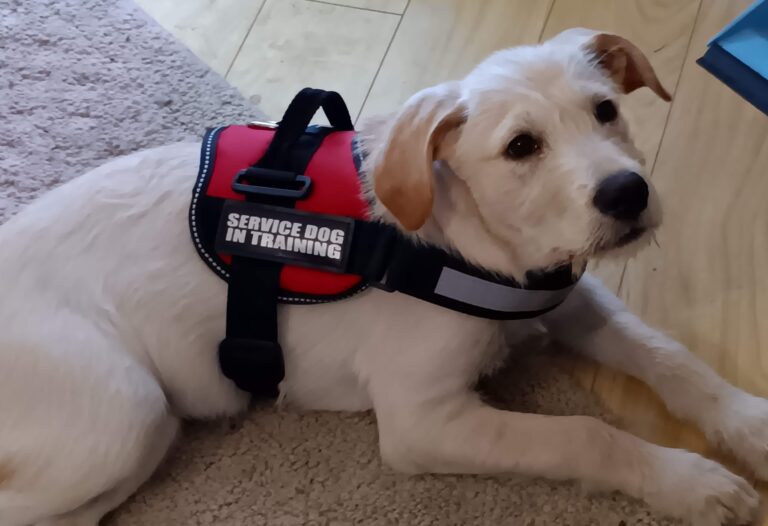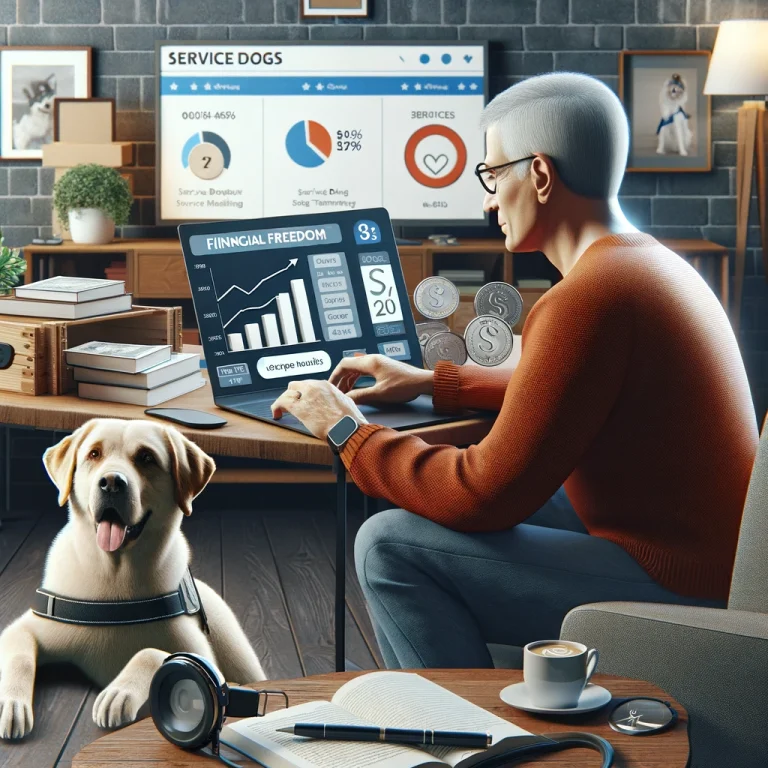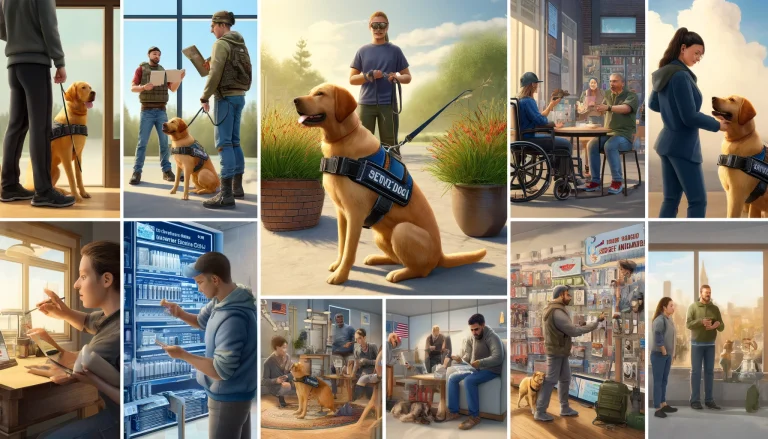Introduction
Service dogs for autism provide incredible support and assistance, transforming the lives of individuals with autism and their families. These autism assistance dogs are specially trained to help with a variety of tasks, offering both practical aid and emotional support. At ServicePupSolutions.com, we understand the profound impact these dogs can have. This blog will explore the many ways service dogs help individuals with autism and guide you through the process of obtaining one.
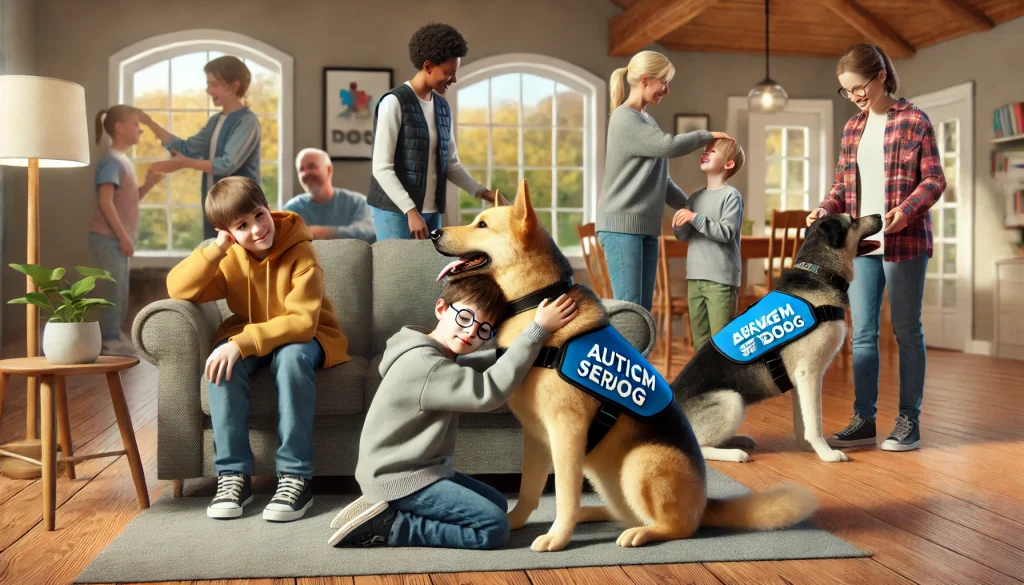
The Role of Autism Assistance Dogs
Autism assistance dogs are more than just pets; they are highly trained animals that provide life-changing support. These dogs can help individuals with autism navigate their daily lives with greater ease and independence.
Emotional Support
One of the primary roles of an autism assistance dog is to provide emotional support. These dogs can help reduce anxiety and stress, offering a calming presence in potentially overwhelming situations. For many individuals with autism, this support is invaluable, helping them feel more secure and confident.
Safety and Security
Safety is a significant concern for many families with autistic children. Autism assistance dogs can be trained to prevent wandering, a common issue for children with autism. These dogs can alert caregivers if the child tries to leave a designated area, ensuring their safety.
Social Interaction
Service dogs can also facilitate social interactions. They can act as a bridge between the individual with autism and others, helping to initiate and maintain conversations. This can lead to improved social skills and greater confidence in social settings.
Sensory Support
Many individuals with autism have sensory sensitivities. Autism assistance dogs can help mitigate sensory overload by providing deep pressure therapy. This involves the dog applying gentle pressure to the individual’s body, which can have a calming effect and help them manage sensory input more effectively.
How Service Dogs Are Trained
Training a service dog for autism support is a rigorous and detailed process. It involves teaching the dog specific tasks tailored to the needs of the individual.
Professional Service Dog Training
Professional service dog training is a comprehensive process. Trainers use positive reinforcement techniques to teach dogs the necessary skills. This training includes basic obedience, as well as specialized tasks such as alerting to wandering, providing deep pressure therapy, and helping with social interactions.
Self-Training Options
For those who prefer to train their own dogs, self-training options are available through ServiceDogOwners.com. This approach can be more cost-effective and allows for a personalized training experience. ServiceDogOwners.com provides resources such as training guides, instructional videos, and support forums to assist in the self-training process.
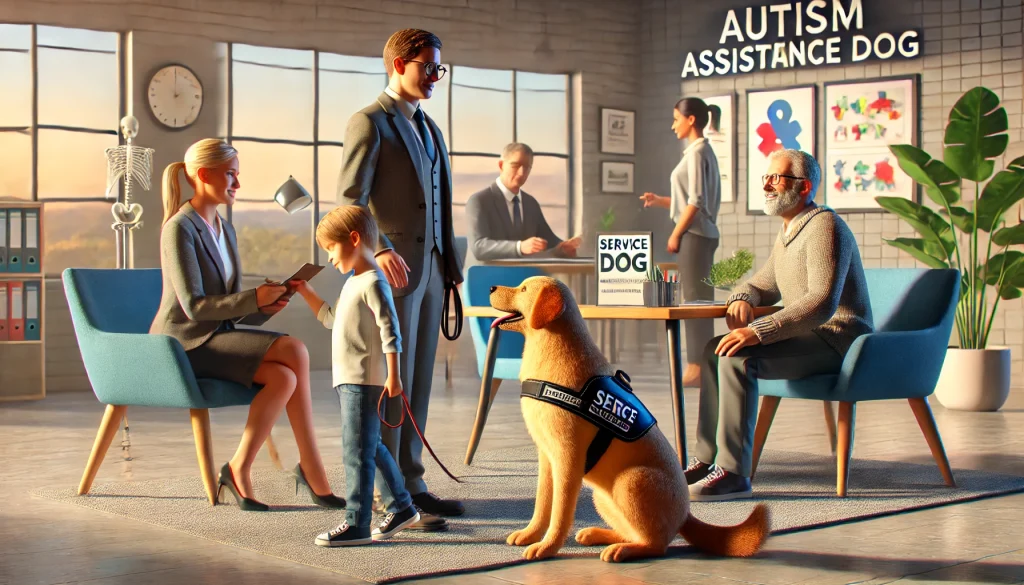
The Process of Getting an Autism Assistance Dog
Obtaining an autism assistance dog involves several steps. It is important to understand each step to ensure a successful match.
Assessment
The first step in acquiring a service dog is to assess the specific needs of the individual with autism. This assessment helps determine the tasks the dog will need to perform and ensures that the right dog is selected.
Selecting the Right Dog
Choosing the right dog is crucial. The dog must have the right temperament and ability to learn the necessary tasks. Working with a reputable organization can help ensure that you find a dog that meets your needs.
Training
Once the dog is selected, the training process begins. Whether through professional training or self-training, this step is essential to ensure the dog can effectively support the individual with autism.
Certification and Accreditation
While certification is not required, it can provide additional credibility and recognition. Certification can also be beneficial when it comes to public access rights and accommodations.
The Importance of Pet Insurance
Investing in pet insurance is essential for service dog owners. Pet insurance ensures that your autism assistance dog receives the best possible care without financial strain. It can cover routine check-ups, emergency care, and specialized treatments. Protecting your service dog’s health is vital, as their well-being directly impacts their ability to provide support.
Essential Service Dog Products
To maximize the effectiveness of your service dog, it is important to use the right products. These products can enhance the dog’s ability to perform tasks and ensure their comfort and safety.
Service Dog Vests
Service dog vests clearly identify your dog as a working animal. These vests often come with pockets for carrying essential items and can help the public understand that your dog is not just a pet but a trained working animal.
Leashes and Harnesses
Leashes and harnesses designed for both comfort and control make it easier for the handler to guide the dog. A good harness can also help with balance and stability for the handler.
Training Tools
Training tools such as clickers, treat pouches, and training collars are essential for maintaining the skills and behaviors necessary for effective assistance.
Real Stories of Transformation
Emma’s Journey
Emma, a young girl with autism, shares her story of how her service dog, Bailey, transformed her life. Bailey’s ability to provide deep pressure therapy and prevent wandering has given Emma’s family peace of mind. “Bailey has changed our lives,” Emma’s mother explains. “He gives Emma the support she needs to feel safe and confident.”
Liam’s Experience
Liam, a teenager with autism, found solace in his service dog, Max. Max’s constant presence and calming influence have helped Liam manage his anxiety and engage more fully with his peers. “Max has made a world of difference,” Liam’s father says. “Liam is more social and confident, thanks to Max.”
The Future of Autism Assistance Dogs
The field of service dog training is continually evolving, with new techniques and technologies enhancing the capabilities of these amazing animals. As research progresses, we can expect even more sophisticated training methods and a broader range of tasks that autism assistance dogs can perform.
Conclusion
Service dogs for autism provide life-changing support, enhancing the lives of individuals with autism and their families in countless ways. From providing emotional support and ensuring safety to facilitating social interactions and offering sensory support, these dogs are indispensable partners. At ServicePupSolutions.com, we are committed to educating and supporting those who benefit from service dogs, ensuring they have access to the best resources, training, and products.
By understanding the full scope of service dog benefits, investing in pet insurance, and utilizing the right service dog products, you can ensure that your autism assistance dog remains healthy and effective in their role. Whether you are considering professional training or exploring self-training options through ServiceDogOwners.com, the journey to a life transformed by an autism assistance dog is one filled with hope and possibility.
Searching for a way to boost your income while keeping your service dog by your side? Learn how to launch a Side Hustle or new career and increase your earnings alongside your loyal companion. Click Here to find out more and start your journey today!



